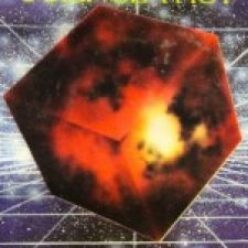TO: Professor Ellis
FROM: Mamadou Bah
DATE: Sept 23, 2020
SUBJECT: 500-Word Summary Draft
This memo is a 500-Word summary of the article, “Comparative Analysis of Electrochemical Energy Storage Technologies for Smart Grid” by Reddy Salkuti.
The Various techniques used to store energy are the future for Renewable Energy and the Smart Grid system. Salkut argues, “storage techniques are the basis of the future of SG. Without adequate storage techniques, there will be no way to reliably meet the energy demands of the future” (Salkut, 2020, p. 2118). Those techniques play an important role in reducing the disadvantages Renewable energy faces today such as cost, popularity, production and sustainability. As the demand and supply of electricity vary all the times, Energy Storage is used to store energy when there is excess of production and use that energy when the demand is higher than the production. Renewable Energy can use super capacitors for a short-term storage and batteries for long term storage.
The types of battery technologies Salkuti writes about are the rechargeable that use chemical reactions to produce electricity. Energy storage technologies use rechargeable batteries following the process of reduction-oxidation for its charging and discharging process. They are classified into electrical, mechanical, electromechanical, and thermal. The different rechargeable Battery technologies described in this article are lithium-ion, sodium-sulfur, flow, lead acid and many other types of technologies that play a fundamental role in the Renewable energy sector and in the Smart Grid system.
The first battery technology Salkuti writes about in this article is the Lithium-ion battery. Made of graphite and lithium metal amalgams, Lithium-ion battery has high performance, but it has its disadvantages such as cost and sensitivity to high temperatures. It can be found in cars, phones and many other devices. The second is the Lithium iron phosphate. It is safe, and waste free. The third one is the Lithium-air batteries, found in electronics, electric car and Grid System, has high specific energy that can be compared to liquid fuels. The fourth one is the Sodium based battery which operates in room temperature. It has negative potential and specific capacity. The fifth one is Sodium-sulfur batteries that operates at 300 degrees Celsius with efficient charging process and can be found in vehicles and stationary applications. The sixth one is Sodium nickel chloride battery also called ZEBRA. It has a low internal resistance and high specific energy which makes it expensive, and it operates at high temperatures. Seventh one are Flow batteries that are built with two separates sides that is composed with chemical energy and it is very reliable. The following technology is Vanadium redox flow battery. It is a combination of ion metals, and it is unpopular. Next are Zinc-bromine batteries that use zinc metal for their anode plates and bromine for the cathode plates, and the energy is stored by the zinc metal. The last three technologies Salkuti lists are the Nickel-based batteries, Lead acids, and the Metal air. They are used in electronics and telecommunication, and they have good performances.
Reference
Salkuti, S. R. (2020). Comparative analysis of electrochemical energy storage technologies for smart grid. Telkomnika, 18(4), 2118–2124. https://doi.org /10.12928/TELKOMNIKA.v18i4.14039



